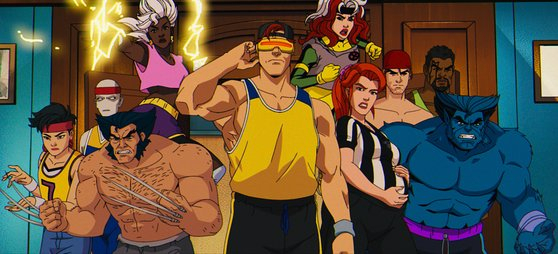“Crash Landing on You,” starring Son Ye-jin (CJ ENM)
Classic K-drama hits “Crash Landing on You” and “Vincenzo” are making comebacks as US remakes.
Amidst the flurry of international remakes of hit Korean shows, these two series stand apart in a league of their own.
Remaking a series typically involves selling the remake rights to an overseas studio, which then recreates the series without the involvement of the original creators.
However, in the case of “Crash Landing on You” and “Vincenzo,” Studio Dragon, the original creator of the shows, did not sell the remake rights to US studios. Rather, it is collaborating with US counterparts to remake the series from their very foundations.

“Vincenzo,” starring Song Joong-ki (tvN)
Collaborations with overseas studios in producing content from scratch is rare, as numerous intellectual property rights issues and on-set regulations often complicate the filming process.
However, driven by the growing need for Korea and the US to leverage each other’s strengths in content creation and their influence in the global market, such efforts are becoming more common.
The second season of “The Big Door Prize,” an Apple TV+ original, the last episode of which aired June 12, is a case in point.
Written by Golden Globe-winning writer David West Read, “The Big Door Prize” stars Chris O’Dowd as Dusty, a man in his 40s who discovers a machine that reveals people’s destinies.
Although the third season has been canceled, it represents a significant milestone for the Korean content production industry, as it was the first Korea-US joint production.
The series is the result of collaboration between Seoul-based Studio Dragon and Santa Monica, California-based SkyDance Media — which is responsible for a slew of hit titles such as “Mission: Impossible” series and “Star Trek.”
“We collaborated with SkyDance Media across the entire production process, ranging from planning, shooting to post-production process,” said an official from Studio Dragon.

“The Big Door Prize,” starring Chris O’Dowd (Studio Dragon)
The advantage of collaborating with an overseas studio for production lies in profitability, the Korean production giant said.
“When we produce a title, streaming platforms that purchase the content provide a percentage of the production costs as profits. Consequently, higher production costs lead to greater profitability,” said an official from Studio Dragon.
“Production costs for US series are much higher than production costs for K-dramas,” he said.
“In this regard, producing a series together with a US studio reaps great profits. For us, filming multiple episodes of a K-drama can be equally profitable as producing a single episode of a US series,” he added.
The decision to partner with an overseas production studio was also driven by the saturated content market in Korea, Studio Dragon added.
“We want to garner an international audience. Exporting Korean dramas is one method, but we found creating and promoting them locally is often more effective,” added the Studio Dragon official.
Studio Dragon’s plan going forward involves numerous ventures in collaboration with US studios. “The Plotters,” a Korean novel, will be co-produced in the US with Universal International Studios Productions, while “Crash Landing on You” and “Vincenzo” are being remade in US studios.
“We are currently creating one a year — we aim to increase the number to three or four as the years go by,” he said.
Studio Dragon is not alone in collaborating with US studios.
Seoul-based Korean animation studio Studio Mir partnered with Burbank, California-based Marvel Studios Animation in producing “X-Men ’97,” which was released in March.
Studio Mir also produced the ninth episode of “Star Wars Visions Volume 2” last year, in collaboration with Lucasfilm, the San Francisco-based production company responsible for “Star Wars” and “Indiana Jones” franchises.

“X-Men ’97” (Disney+)
According to industry insiders, Korean production studios are considered attractive partners for content creation collaborations.
“US production studios are reportedly very interested in collaborating with Korean production studios,” said an official from a global streaming service on the condition of anonymity.
“(They deem that) if production is delegated or jointly held with a different country, it brings out the distinct flavor of that country,” she said.
“Also, Korean production is cost-effective compared to US production,” she said.

“Star Wars Visions Volume 2” (Studio Mir)
Experts suggest that collaboration between Korea and US studios could produce content that address each country’s weaknesses.
“US production studios are progressively failing in producing unique titles and are in need of finding new types of content,” said Kim Il-joong, director of global business division at Korea Creative Content Agency.
“If US production companies excel in introducing interesting plot, Korean production companies demonstrate talent in developing character relationships. Their collaborations could result in high-quality productions that satisfy both aspects,” said Kim.
However, he noted differences in industry structures could be a risk factor when engaging in cross-border collaborative production.
“There are virtually no agencies like Creative Artists Agency, United Talent Agency and William Morris Endeavor in Korea that represent producers and staff. There is no agent to assist them in learning about the American production system. This creates a risk, as there is no middleman to handle tasks such as contract reviews and road management,” said Kim.
“Copyrights and individual rights need to be clearly checked when collaborating with the US,” he said.
“Also, differences in on-set regulations, such as producing content in a low-carbon emission environment, which differ by country, should be agreed upon,” he added.





